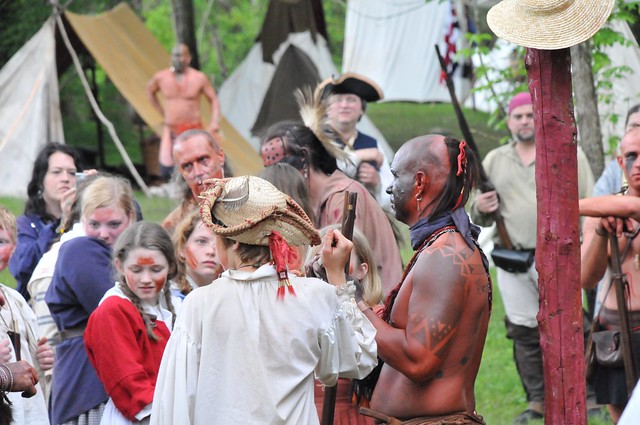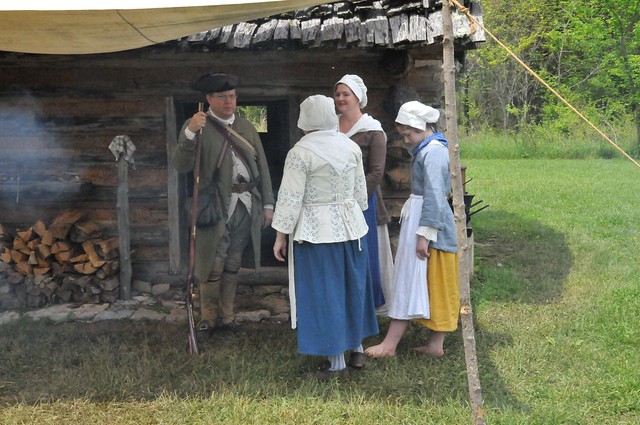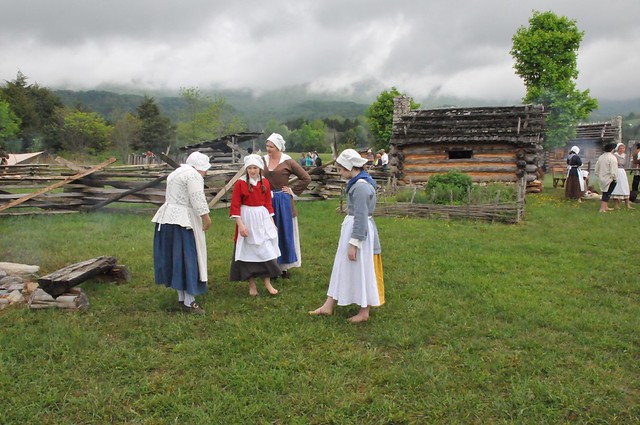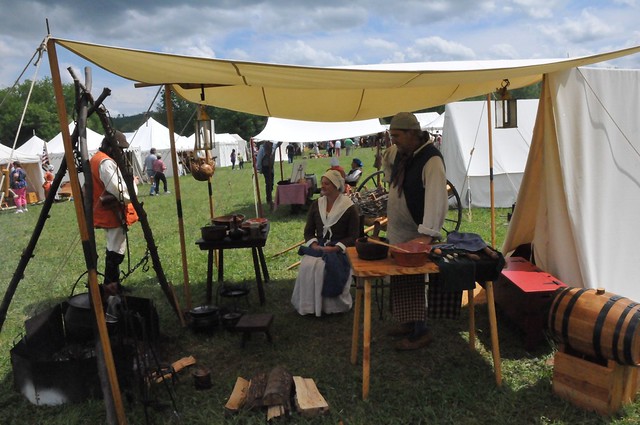Opportunities for mothers and daughters to bond take many forms. Shopping, getting nails or hair done, a lunch date or a trip to the movies all provide ways to share common interests and connect on a deeper level.
My daughters and I went a different route this past Mothers Day weekend. We created from the skin out 18th century outfits, then participated in the annual Raid at Martins Station event at Wilderness Road State Park. We had the time of our lives.

Emma was taken in the raid

We were honored to spend time with Captain Martin's brother and sister in law

It was good to meet more experience reenactors to get ideas

I looked like I was working but I was really waiting for the snickerdoodles in the dutch oven to finish cooking
This all started two years ago when we went to the Raid as guests. My girls fell in love with the setting and when they saw children their age “dressed out”, which means in period appropriate clothing, they saw a way to be a part of a living history event in much more meaningful way.
And so our quest for linen and stays began. After many hours of research, more shopping for appropriate materials and patterns than I care to admit (see, there was shopping in there, too!), close to 40 hours of sewing time and no small amount of pricked fingers we were ready to go.
So what does a proper 1776 settlers wife and daughters wear on the Western frontier as they prepare to venture into the uncharted territories of Kentucky? A linen shift, which is worn next to the skin and also doubles as a nightgown. Ours were made of fine quality white linen, which was a joy to sew. Next came stays for me and jumps for the girls. Stays were later to be known as corsets, and they provided both support and the fashionable silhouette of the time. Mine and my eldest were working stays and had boning but not much. Boning provides the stiffness in the stays and were originally made out of whale baleen. The youngest wore jumps which were not boned, but still provided support and coverage. Jumps were lighter version of stays and looked more like a laced vest. Over that went petticoats, which were worn either singly or in many layers, and were an outer as well as an inner garment. We made ours out of mid weight linen. This was topped by a shortgown, which is another simple garment that is somewhat fitted, but is loose enough to work in. This was also made of mid weight linen. Then came aprons, a linen cap, stockings and shoes. The daughters were barefoot, as was I by the end of the day. Not entirely appropriate for me, but very comfortable!
Our journey together into the past taught us about warp and weft and thread count, dye and prints and weaves, tucks, gathering, boning and stays, how to make flat felled seams and French seems, when to use a sewing machine and when to hand sew. We discovered who could sew a fine seam, who could make eyelets and how to get bear grease and ocher out of white linen.
We dipped candles, tended the herb garden, helped with the natural dyes and made some wonderful new friends. It was an amazing immersive experience in frontier life, and one in which we plan to participate in as often as we can. I have talked my husband and son into dressing out next year, so it will be a family experience.

Maggie in lightly boned jump shift petticoat and cap
The Raid is conducted once a year in May and more information can be found at Wilderness Road State Park is a living history venue and tells the story every day of the crossroads of cultures, western expansion and life on the frontier.
WE HOPE YOU AND YOUR FAMILY CAN EXPERIENCE CLICK HERE FOR DIRECTIONS AND MORE INFORMATION.
